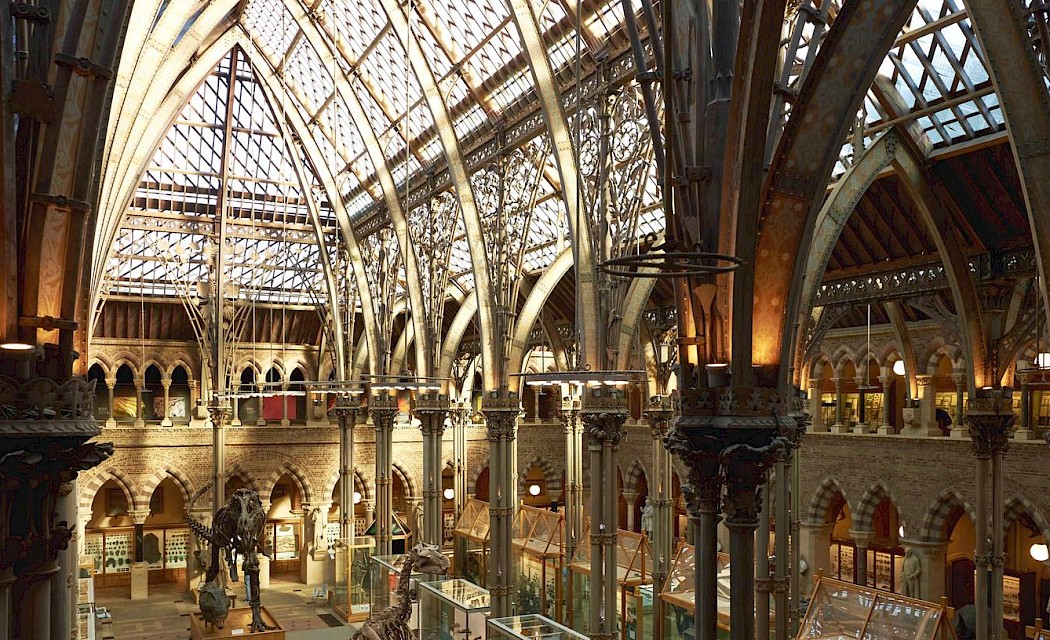Sixteen new displays open at Oxford University Museum of Natural History this summer, in the latest phase of a major overhaul. The Life, as we know it project offers visitors an aesthetic take on some of the most important ideas about how the natural world works, showcasing hundreds of specimens, bespoke taxidermy and models, and exquisite glass sculptures.
The latest displays complete three new thematic zones in the court: Biodiversity, Evolution, and Ecosystems. A series of stylised dioramas present ecosystems from six different environments, each looking at a critical process in the interactions between organisms and environment. New ethically sourced taxidermy includes a mother and infant Hamadryas Baboon, a sleeping Koala, and a raccoon.
Since its foundation in 1860, the Museum has blended art and science in its exploration of nature. This philosophy is honoured with the inclusion of four delicate glass artworks – three by UK artist Luke Jerram and one commissioned specially from glass artist Pratibha Mistry. Three of these sculptures feature in a display on the surprising influence of viruses on the development of life, including their role in the evolution of the mammalian placenta.
Embedded digital interpretations support the natural history specimens, allowing visitors to dig a little deeper into the ideas being explored. In one display, animated 3D models are shown alongside skeletal material to reveal correspondences between the forelimb bones of a wide range of mammals, reptiles, and birds, all of which share an evolutionary origin.
“Since the Life, as we know it project began, the Museum’s visitor numbers are running at 10 per cent above the highest levels recorded in its 160-year history,” said Museum director, Professor Paul Smith. “With further promotion through a city centre bus route campaign we hope even more new visitors will become excited about the natural world through these beautiful new displays.”
Phase 3 of Life, as we know it has been generously supported by funding from FCC Communities Foundation and the DCMS/Wolfson Museums and Galleries Improvement Fund. Funding is currently being sought for the fourth and final phase of the renewal of the main court displays.
The Museum of Natural History is open daily from 10am – 5pm and admission is free.
Image courtesy of Oxford University Museum of Natural History
